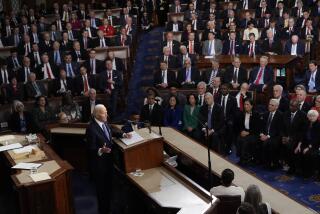October jobs report far better than expected
WASHINGTON — All of a sudden, the American economy is looking very resilient — much more so than experts had thought.
Despite forecasts that job growth would be sapped by the budget impasse and government shutdown, employers in the U.S. stepped up their hiring last month by adding 204,000 new jobs across a wide spectrum of industries.
The increase in payrolls was almost double what many analysts were predicting and immediately triggered speculation that the Federal Reserve would be more prone to start reducing its large bond-buying stimulus program next month.
The Labor Department’s report Friday also made substantial upward revisions to job growth for the prior two months, to 163,000 in September and 238,000 in August.
Taken together, the data over the last three months indicate that the American job-creation machine is not sputtering, as some had feared, but is continuing to run at a fairly steady, if moderate, speed.
The unemployment rate, however, edged up to 7.3% last month from 7.2% in September amid an unusually large drop in the total number of people working or actively looking for jobs — what economists call the labor force.
That data injected a measure of skepticism to an otherwise optimistic report, though analysts noted that survey calculations of the unemployed and the labor force were complicated by the partial government shutdown, which temporarily furloughed hundreds of thousands of employees.
The payroll numbers are based on a much larger, separate sample of employers, not households, and thus are considered more reliable and less volatile from month to month. Labor Department officials said they saw no discernible effect on new jobs stemming from the shutdown. The report counted federal workers on furlough as employed because they were receiving back pay.
Analysts thought job growth in October would have been stronger had there not been the 16-day closure of many federal facilities and operations. Anecdotal reports suggested that some private employers may have put their expansion plans on ice as they awaited greater clarity on the political and economic outlooks.
“If some people did delay their hiring, November could be a pretty strong month” for job gains, said Sophia Koropeckyj, a labor economist at Moody’s Analytics in West Chester, Pa.
After Friday’s report, Koropeckyj forecast job growth rising to 250,000 a month by the middle of next year. “It’s slowly inching up,” she said.
Chris Nelson, chief executive of Kemin Industries, a Des Moines maker of nutrition ingredients for the food industry, said the dysfunction in Washington may not touch his company’s employment right away but could down the road. Kemin has added 80 employees this year and has 30 openings in the U.S., he said.
“The last charade played out in Washington has, quite frankly, shaken my confidence in any relative credibility and stability of the government,” he said.
Even amid such concerns and uncertainty, Kemin and some other companies have kept hiring. The pickup last month came in a broad range of low- and high-paying sectors, including manufacturing, healthcare, retail and professional services, such as engineering and computer design.
“Perhaps the biggest surprise was the increase of 53,000 jobs in the leisure and hospitality category,” which includes restaurants and hotels, said Dean Baker, co-director of the Center for Economic and Policy Research in Washington.
“That sector might have been expected to take a hit from the closing of national parks and other government-run tourist destinations,” he said. “That doesn’t seem to have been the case.”
The latest jobs report is likely to boost confidence in an economy that has been difficult to read lately.
Earlier this week, officials said economic growth in the third quarter improved to a solid 2.8% annual rate, from 2.5% in the prior quarter, but that was largely because of a bigger-than-expected restocking of goods. Both consumer spending and business investment growth slowed in the third quarter.
Measures of retail activity in October have largely exceeded expectations, and holiday sales and hiring are projected to rise above last year’s levels.
Yet Main Street isn’t enjoying the party on Wall Street, where the Dow Jones industrial average soared to a new high Friday. Consumer confidence, as tracked by the University of Michigan and Thomson Reuters, fell this month to its lowest level in nearly two years, the survey group said Friday.
And while housing prices are recovering, many workers have yet to see substantial wage gains. The Labor Department report Friday said average hourly earnings rose just 2 cents last month, to $24.10, after increasing by 3 cents in September.
Analysts pointed out that the economy, after nearly 4 1/2 years of recovery, still needs to create 1.5 million jobs to make up the 8.7 million that were lost between late 2007 and early 2010.
The number of unemployed last month stood at more than 11 million, and that doesn’t include many who had dropped out of the job market because they could not find adequate work or were too discouraged. Nearly 4 out of 10 of the officially unemployed have been without work for more than six months — double the percentage before the recession.
At the October pace of job creation, “it will still take five years to get back to the pre-recession unemployment rate of 5%,” said labor economist Heidi Shierholz at the Economic Policy Institute in Washington.
Still, Shierholz was pleasantly surprised by the strength of Friday’s report, saying the underlying trend of job growth now looks more like 200,000 a month than 150,000 a month.
“It’s not gangbusters, but it’s better,” she said.
Whether the job numbers are good enough for the Fed remains to be seen. Policymakers at the central bank are scheduled to meet Dec. 17-18, so they will have one more monthly jobs report to review before considering a reduction in their $85-billion-a-month purchases of Treasury and mortgage securities — a stimulus program aimed at holding down long-term interest rates.
Fed officials have said their decision will depend on the data, and they are looking in particular for substantial, sustainable progress in the job market.
“Today’s data lift the possibility of a December start to the inevitable wind-down of large-scale asset purchases,” said Alan Levenson, chief economist at mutual fund giant T. Rowe Price in Baltimore. “Strength through the government shutdown period should boost this confidence, particularly if sustained into November.”
On Friday, the prospect of a stronger-than-believed economy and an earlier-than-expected reduction in Fed stimulus pushed up the benchmark 10-year bond yield, which tracks mortgage rates, by a hefty 0.15 percentage point to 2.75%.







